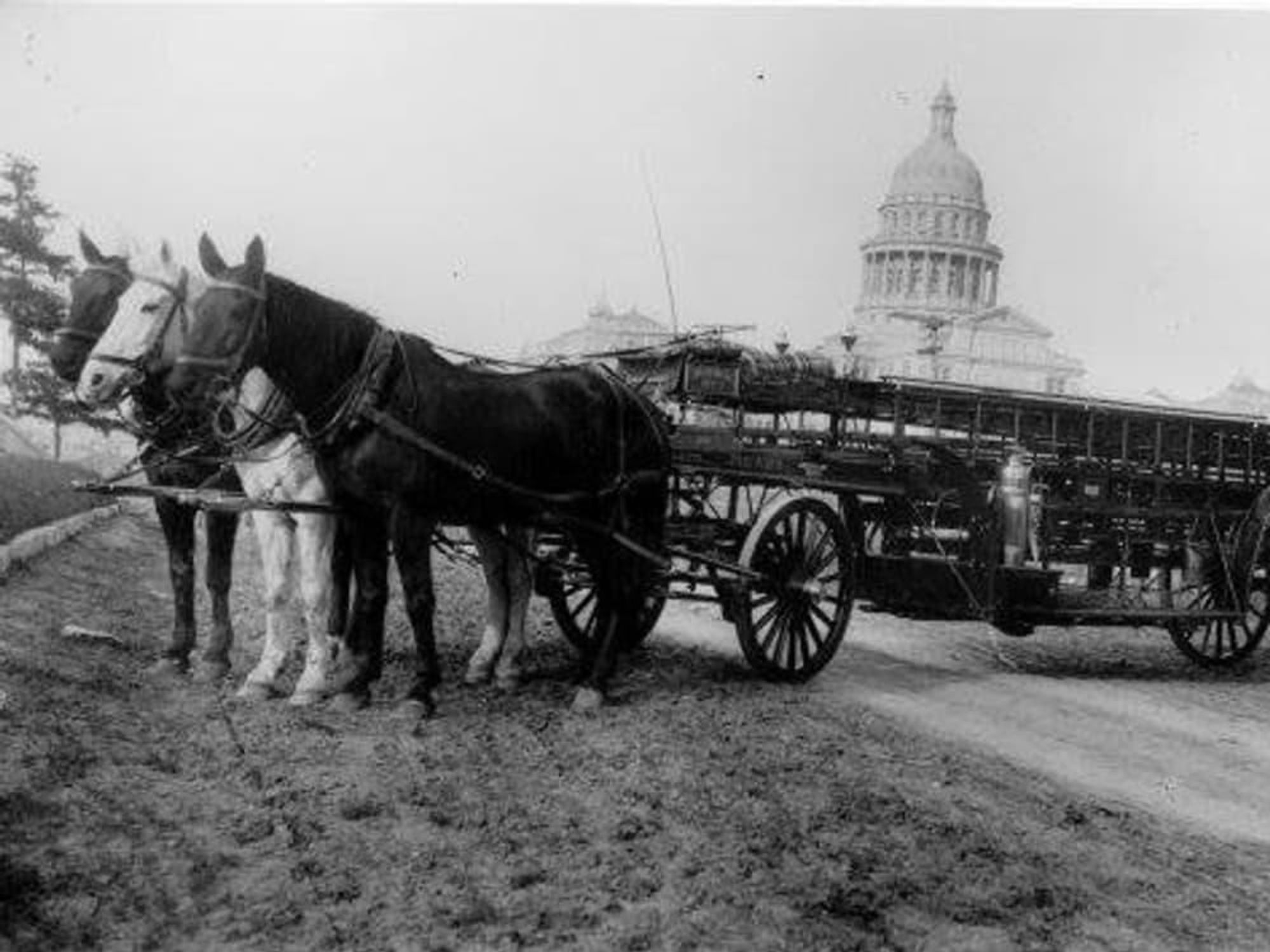History of Austin
Uncover the 150-year history of the Austin Fire Department

For more than 150 years, Austin firefighters have been responding to the calls of citizens in need. As the city morphed from a small town on the banks of the Colorado River to a tech-fueled metropolis, the Austin Fire Department has grown with it, amassing stories of blaze and glory along the way. From the monumental disasters to tales of minorities breaking through the ranks, the history of the AFD is indeed the history of the city itself.
Prior to the 1850s, firefighters were all volunteers, mostly prominent businessmen from the community — and Austin was no exception. However, as the city grew, the need for an official organization also expanded. Early firefighting in Austin consisted of what one would imagine: water-lined buckets, fire pumps connected to hoses, and sirens alerting citizens to beware of possible flames.
That was until 1858 when Austin Hook and Ladder Company No. 1 was officially formed and recognized as the city's first firefighting division. C.F. Millett was named the first chief in 1866.
When the fire department became official, cisterns, also known as water tanks, were strategically placed within the city for immediate access by firefighters. In 1870, someone in the department suggested the use of fire horses to allow a faster response in fighting flames. Horses were chosen for their speed and size, and trained for six months prior to serving in the department.
Just after the turn of the century, the department purchased its first motor vehicle, further accelerating response time when battling blazes. And in 1916, the fire department abandoned the volunteer model to became a fully staffed department with 27 firefighters on the payroll.
Following a national trend, AFD began the process of hiring minorities, and in 1952, added three African American firefighters to the department. In 1963, Joe Villarreal became Austin's first Hispanic firefighter. More than a decade later, Lucinda Hough who became the first woman to join the department in 1976. Finally in 2015, Chief Rhoda Mae Kerr, a fourth-generation firefighter, broke yet another glass ceiling to become the first woman to led the Austin Fire Department.
Today, AFD responds to about 85,000 calls each year, and roughly 70 percent of these calls involve medical issues. But there have certainly been a number of other incidents that Austin historians recall, from the fire that consumed the original Capitol building in 1881 to the devastating floods of 1981, exactly a century later. The Memorial Day floods of 1981 killed 13 people died and caused 31 people to be rescued from their cars or homes by firefighters. In fact, the floods were so deadly that they led to the creation of AFD's Dive Rescue Team. To this day, whenever Austin experiences flooding, the team takes advantage and conducts intense training for rescue operations.
For those interested in Austin history, a trip to the Austin Fire Museum reveals a repository of local as well as national artifacts exemplifying the fearlessness of first responders responding to the call to duty.
Lieutenant Jerry Cohen serves as the museum curator, and began his Cadet Class on July 31, 2001, just weeks before 9/11. "Our training instructor made us do a Memorial Stair Climb on September 12, the very next morning," recalls Cohen.
Cohen was always fascinated with history and his interest in researching the fire department was piqued when he discovered a former firefighter's memorial plague next to a fire station. Although there had been talk and interest in beginning a fire museum for Austin, it was not until Cohen met with the administration, secured a central location in downtown on East Fifth Street, and organized other volunteer curators to staff the museum and respond to questions and requests, that the museum became official. The Museum opened on April 21, 2004, San Jacinto Day.
There are easily "thousands of documents" in the museum including photographs, ledger books, and documents with a wealth of information that not only chronicles the history of AFD, but also of Austin and the United States. "It wasn't until Austin hired the first three African American professional firefighters in 1952 that black firefighters were represented in any fire department in Texas," says Cohen. "[This occurred] five years after Jackie Robinson broke the color barrier in baseball."
The Austin Fire Department is always prepared to meet emergencies as fires, arson investigations, medical emergencies, responding to water rescues, car accidents, baby births/injuries and deaths, animals, and occasionally people stuck in trees and other unusual predicaments as requested. (And these aren't even the most unusual calls for assistance.) As Austin grows at a rapid pace, so does the Austin Fire Department, as well as the need for more stations and firefighters serving a growing population.

 Lots of people want to live in Leander. Leander Parks & Recreation/Facebook
Lots of people want to live in Leander. Leander Parks & Recreation/Facebook